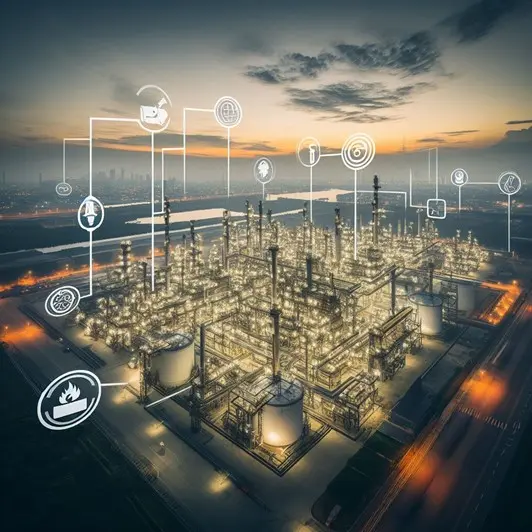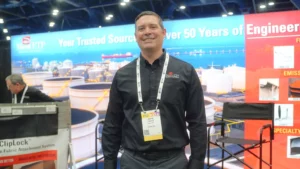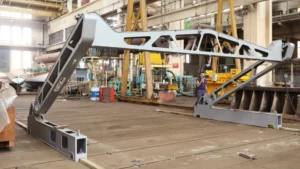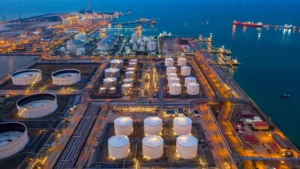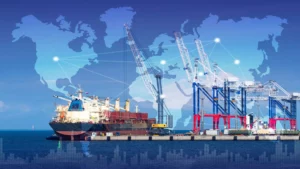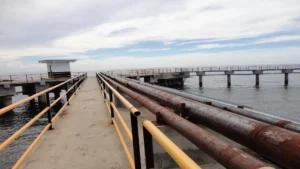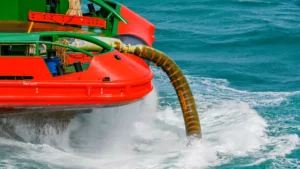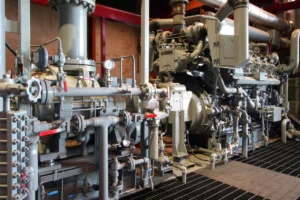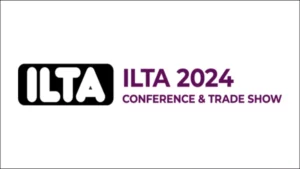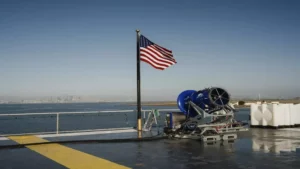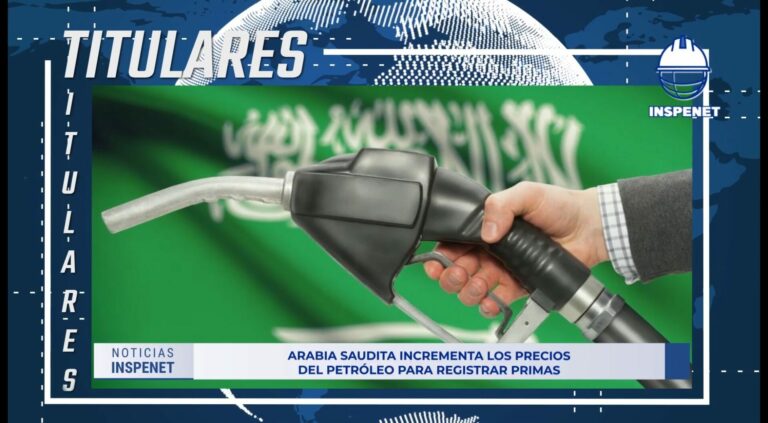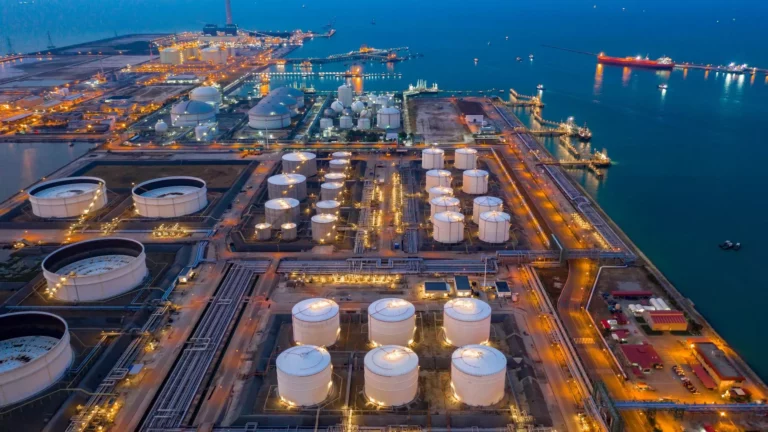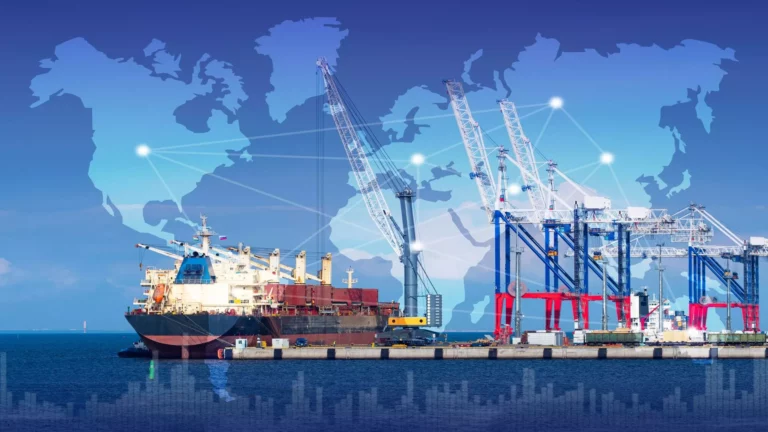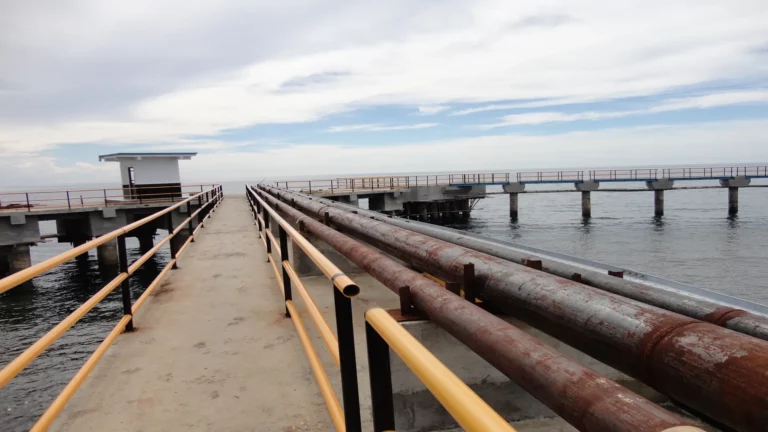Author: Ing. Antonio Zavarce, December 6, 2023.
Introduction
At the heart of the oil and gas industry , where fire risks are inherently high, is API RP 2001 , a regulation that not only sets the standard, but redefines refinery safety worldwide. The RP 2001 API, formally known as “Recommended Practice for Fire Protection in Refineries”, developed by the American Petroleum Institute (API), is an essential guide for industry professionals, designed to mitigate the devastating fire risks in one of the most challenging and dangerous environments.
This recommended practice has become a beacon of safety, guiding refiners toward safer practices and more effective response systems. Its importance lies not only in its focus on fire prevention and control, but also in its ability to adapt to technological changes and emerging industry needs. Through a proactive and evidence-based approach, API RP 2001 not only protects valuable assets and prevents economic losses, but most importantly, safeguards human lives and the environment.
This article discusses in depth how the RP 2001 API establishes these fundamental standards. The evolution, its key principles, and how its implementation has led to significant changes in the way refineries operate and respond to emergencies are analyzed. Using real-world examples and case studies, we will illustrate the effectiveness of these best practices in fire prevention and management. This is a journey through the heart of security in the oil and gas industry, an exploration of how API RP 2001 has changed the game in refinery fire protection and how it continues to be a vital element in maintaining safe and efficient operations.
History and evolution of API RP 2001: From the ashes to security excellence
API RP 2001 did not emerge in a vacuum, but as a forceful response to a series of critical challenges and tragedies in the oil and gas industry . Its story is both a testament to technological advances and a story of learning and adaptation in the face of catastrophic incidents.
In the early decades of the 20th century, the oil refining industry was in its infancy, and with it, safety understandings were rudimentary at best. Refinery fires, often resulting from unsafe practices, outdated equipment, or failures to handle flammable materials, were unfortunately common events. These incidents not only caused massive property damage, but also claimed lives and had devastating environmental impacts.
The need for a consistent set of safety practices became evident following a series of high-profile refinery fires, which highlighted deficiencies in fire prevention and response strategies. These incidents served as catalysts for the industry, prompting industry leaders to seek more systematic and evidence-based solutions.
API, recognizing this urgent need, took the lead in consolidating a set of recommended practices , drawing on fire safety experts, refinery engineers and regulatory authorities. The first edition of API RP 2001 was published in[insertar año] , marking a milestone in the history of refinery safety. This document was not static; It reflected a commitment to continuous improvement, adapting to technological advances and lessons learned from new incidents.
Over the years, the RP 2001 API has evolved significantly. Each review has incorporated deeper insights into the nature of refinery fire risks, as well as advances in fire detection and suppression technologies. It has also responded to changes in refinery operating practices and the emergence of new types of crude oil and chemical processes.
Today, API RP 2001 stands as a compendium of knowledge and practices, a guide that has been forged and refined through decades of experience and learning. Its continued evolution is a testament to an unwavering commitment to safety, which not only addresses current risks but also anticipates and prepares for future challenges. In the next segment, we’ll dive into the key principles and requirements of this essential practice, unraveling how API RP 2001 shapes fire safety strategy and execution in the modern refinery landscape.
API RP 2001 Key Principles: Fundamentals of a Comprehensive Fire Safety Strategy
The API RP 2001 is based on fundamental pillars that define its approach to safety in refineries. These principles not only establish a framework for fire prevention and response, but also serve as a compass for decision-making and the implementation of safety practices in the oil and gas industry .
Risk assessment: The starting point
One of the most critical aspects of API RP 2001 is risk assessment. This process involves identifying and analyzing potential fire risks within a refinery. Factors such as the nature of the flammable materials handled, the configuration of the facilities, operating conditions and possible ignition sources are considered. This risk analysis is not a static exercise; requires continuous review to adapt to changes in operations, processes and the environment.
Fire prevention: A proactive strategy
Prevention is at the core of the RP 2001 API . The standard establishes guidelines to minimize the chances of a fire. This includes the safe design of facilities, proper maintenance of equipment, management of hazardous substances, and implementation of safe work practices. Prevention also encompasses staff training and awareness, ensuring that all employees are equipped with the knowledge and skills necessary to identify and mitigate fire risks.
Fire response and control systems: Emergency preparedness
In the event of a fire, a quick and effective response is crucial. API RP 2001 details requirements for fire control and response systems. These systems include early fire detection, alarms, evacuation plans, firefighting equipment, and strategies to control and extinguish fires. The standard emphasizes the importance of having well-trained and equipped emergency response teams, capable of acting in an efficient and coordinated manner.
Integration and coherence: A systemic approach
An underlying principle in the RP 2001 API is the integration and consistency of all these elements. Risk assessment, fire prevention and response are not isolated components, but parts of an integrated safety management system. Cohesion between these elements is essential to create a safe and well-protected refinery environment against fire.
In summary, API RP 2001 establishes a comprehensive framework to address fire safety in refineries . With a balanced approach that ranges from risk assessment and prevention to emergency preparedness and response, this best practice stands out as an indispensable tool for maintaining safety and efficiency in one of the most challenging industrial environments. In the following sections, we will explore in more detail the technologies and recommended practices that API RP 2001 promotes, shedding light on how these guidelines translate into concrete actions and effective systems on the ground.
Technologies and recommended practices in API RP 2001: Moving towards maximum security
At the forefront of refinery fire prevention and control, API RP 2001 recommends a series of advanced technologies and best practices essential to minimizing risks and maximizing safety.
Automatic Sprinkler Systems: First Line of Defense
Automatic sprinkler systems are essential in your fire safety strategy. These systems are designed to activate upon detecting heat, releasing water or extinguishing agents onto the incipient fire. The effectiveness of these systems lies in their ability to respond quickly, often controlling or extinguishing the fire before emergency response teams can reach the scene. The selection and design of these systems must be consistent with the specific types of risks present in each area of the refinery.
Fire detection technologies: Constant surveillance
Early detection is crucial for effective fire response. Modern fire detection technologies include smoke and heat detectors, as well as flame and gas detectors, which can quickly identify a fire hazard. These advanced systems not only alert personnel of a potential fire, but can also integrate with other safety systems to activate automatic sprinklers or initiate evacuation procedures.
Emergency Response Teams: Preparedness and Capacity
Emergency response teams at refineries must be equipped with specialized tools and receive ongoing training to effectively deal with fire situations. This includes self-contained breathing apparatus, fire protection suits, and fire extinguishers of various types, suitable for different classes of fire. Additionally, regular training in firefighting tactics and emergency drills is vital to maintaining your responsiveness.
Systems integration and response coordination
A crucial part of the API RP 2001 recommendations is the integration of detection, alarm and response systems. This ensures that, in the event of a fire, the response is coordinated and efficient, maximizing staff safety and minimizing damage to facilities. Coordination between internal response teams and local emergency services is also a key aspect, ensuring a unified and effective response to emergencies.
In summary, the implementation of these technologies and practices recommended by API RP 2001 not only represents a commitment to safety regulations, but also reflects an investment in the protection of human lives, assets and the environment. These measures, applied effectively, are essential to ensure a safe and resilient work environment against the risk of fires in refineries.
Implementation and challenges of API RP 2001 in refineries
Implementing API RP 2001 in refineries is a complex process, presenting unique but crucial challenges to ensure operational safety and efficiency. These challenges and strategies to overcome them are critical to successful implementation.
Below are the important challenges
- Implementation Cost: Adopting advanced technologies and updating security practices may require a significant financial investment. For many refineries, especially in resource-constrained regions, the upfront cost can be a significant hurdle.
- Advanced Systems Maintenance: Once implemented, these technologies require regular maintenance and upgrades to ensure their effectiveness. This not only implies an ongoing cost, but also the need for qualified personnel to manage it.
- Staff training: The effectiveness of security measures depends largely on staff training and awareness. Continuing training is essential, but can be challenging in terms of resources and time.
- Integration with existing systems: Integrating new technologies and practices with existing systems in refineries can be complicated, especially in older facilities that may require significant structural modifications.
Strategies to overcome challenges
- Planning and prioritization: Careful planning and prioritization of investments can help manage costs. This includes assessing the highest risk areas and gradually implementing improvements.
- Seeking funding and grants: Exploring funding options, such as loans, government grants, or partnerships with technology providers, can provide additional resources for implementation.
- Continuing training programs: Establishing continuing training programs in fire safety and emergency response helps keep staff up to date and prepared.
- Preventive Maintenance: Implementing a preventative maintenance program can help reduce long-term costs by ensuring equipment is functioning properly and minimizing costly breakdowns.
- Collaboration with Safety Experts: Working with specialist fire safety consultants can provide valuable experience to integrate new practices in the most efficient way.
The successful implementation of the RP 2001 API is a continued commitment to security and efficiency. Overcoming these challenges requires not only financial investments, but also a focus on training, maintenance and continuous improvement. By proactively addressing these obstacles, refineries can ensure a safer environment and meet the highest fire safety standards set by API RP 2001.
Case studies and examples of companies that have applied the RP 2001 API
Yes, there are several success stories of companies that have applied the RP 2001 API.
- One of the most notable examples is the natural gas transportation company, Kinder Morgan. Kinder Morgan used API RP 2001 to develop a corrosion risk management program that helped them reduce maintenance costs and increase the reliability of their facilities.
- Another example is the oil and gas company, ConocoPhillips. ConocoPhillips used API RP 2001 to develop a corrosion risk management program for its pipelines. The program helped ConocoPhillips reduce the number of pipeline leaks by 50%.
- API RP 2001 has also been used by companies in other sectors, such as chemicals and petrochemicals. For example, the chemical company Dow used API RP 2001 to develop a corrosion risk management program at its manufacturing plants. The program helped Dow reduce maintenance costs and increase the safety of its facilities.
Safety and Environmental Impact: The Benefits of API RP 2001
The implementation of API RP 2001 has had a significant impact on improving worker safety and protecting the environment in the oil and gas industry , especially in refinery operations. Adherence to these recommended practices leads to a decrease in the frequency and severity of incidents, as well as a reduction in harmful emissions and spills.
Improved worker safety
- Incident Reduction: The implementation of advanced fire detection and suppression systems, as recommended in API RP 2001, has led to a notable reduction in the occurrence of fires and explosions. This means fewer accidents and injuries in the workplace.
- Evacuation and Emergency Response Best Practices: Detailed evacuation and emergency response guidelines ensure workers can exit dangerous situations quickly and safely, minimizing injuries in the event of an incident.
- Staff Awareness and Training: API RP 2001 emphasizes regular training of staff in safety practices, which increases awareness and preparedness for emergency situations.
Environmental Protection
- Spill Prevention: Recommended practices include measures to prevent spills of oil and other chemicals, which can have devastating effects on the environment. These measures not only prevent direct contamination, but also reduce the risk of fires and explosions caused by spills.
- Reduction of Harmful Emissions: By preventing fires and explosions, API RP 2001 also contributes to the reduction of harmful emissions. Refinery fires can release a large amount of harmful gases and particles into the atmosphere, so their prevention has a direct positive impact on air quality.
- Sustainable Resource Management: By promoting efficiency and safety in operations, API RP 2001 supports more sustainable management of natural resources and facilities, resulting in lower environmental impact.
Taken together, the implementation of API RP 2001 represents a significant commitment to worker safety and environmental protection. By adopting these practices, refineries not only comply with regulations and safety standards, but also demonstrate corporate and social responsibility, contributing to a safer and more sustainable future in the oil and gas industry .
Future trends and developments in refinery fire safety
Refinery fire safety is at a point of transformation, with several emerging trends and future developments promising to revolutionize the way these facilities manage fire risks. These advances mainly focus on the adoption of digital technologies, artificial intelligence (AI) and automation.
Digital technologies and Big Data
- Real-Time Monitoring: Digital technologies allow real-time monitoring of refinery conditions, improving the ability to detect and respond to risk situations before they become fires.
- Predictive Analytics: Using big data and advanced analytics, refineries can predict potential equipment failures or identify patterns that could indicate increased fire risk, allowing for preventative interventions.
Artificial Intelligence and Machine Learning
- Advanced fire detection: AI systems can analyze data from multiple sources (such as temperature sensors, video cameras, and smoke detectors) to quickly identify signs of fire, even in very early stages.
- Automating emergency responses: AI can help automate certain emergency responses, such as activating fire suppression systems, closing critical valves, or initiating evacuation protocols, increasing the speed and effectiveness of the response.
Automation and robotics
- Firefighting Robots: Robots and drones can be used to fight fires in high-risk or inaccessible areas, reducing the risk to emergency personnel and improving response effectiveness.
- Automated fire suppression systems: Increasingly sophisticated fire suppression systems can act autonomously to control and extinguish fires, based on real-time data and advanced decision algorithms.
Sustainability and environmental resilience
- Green materials and technologies: The focus on sustainability is leading to the development of safer, greener building materials, as well as fire suppression systems that are effective but have a lower environmental impact.
- Climate change resilience: With climate change increasing the frequency and severity of extreme events, refineries are adopting strategies to improve their resilience, including fire protection.
These trends indicate a future in which refinery fire safety will be more predictive, reactive and efficient. Integrating digital technologies, AI, and automation into safety strategies will not only improve fire protection, but will also help refineries become more sustainable and resilient in the face of emerging challenges.
Conclusions
The API RP 2001, as explored in this article, represents a cornerstone in fire risk management in the oil and gas industry . From its humble beginnings to its evolution into a comprehensive guide, API RP 2001 has proven to be a vital instrument in safeguarding not only the physical assets of refineries but, more importantly, the lives of those who work in these complex industrial environments. The implementation of its principles and practices has led to a notable improvement in worker safety and environmental protection, through the reduction of incidents and the minimization of harmful emissions.
Looking ahead, refinery fire safety is set for significant transformation, with the incorporation of emerging technologies such as artificial intelligence, big data and automation. These developments promise not only to improve response capacity and efficiency in emergency situations but also to strengthen environmental sustainability and resilience.
API RP 2001 is not just a set of guidelines, but a continuous and adaptive security philosophy that aligns with the changing needs and technological advances of the industry. Its role in shaping the future of refinery safety is indisputable, and its continued evolution will be key to meeting the challenges of an ever-changing world. Refineries that adopt and adapt to these principles will not only be investing in safety and efficiency, but also in a safer and more sustainable future for the oil and gas industry .
Reference
Own source
About the Author

Antonio Zavarce. Inspenet Operations Director
Eng. Mechanic, with more than 30 years of experience in the Oil and Gas industry, Venezuela, e. email: tony.zavarce@inspenet.com



